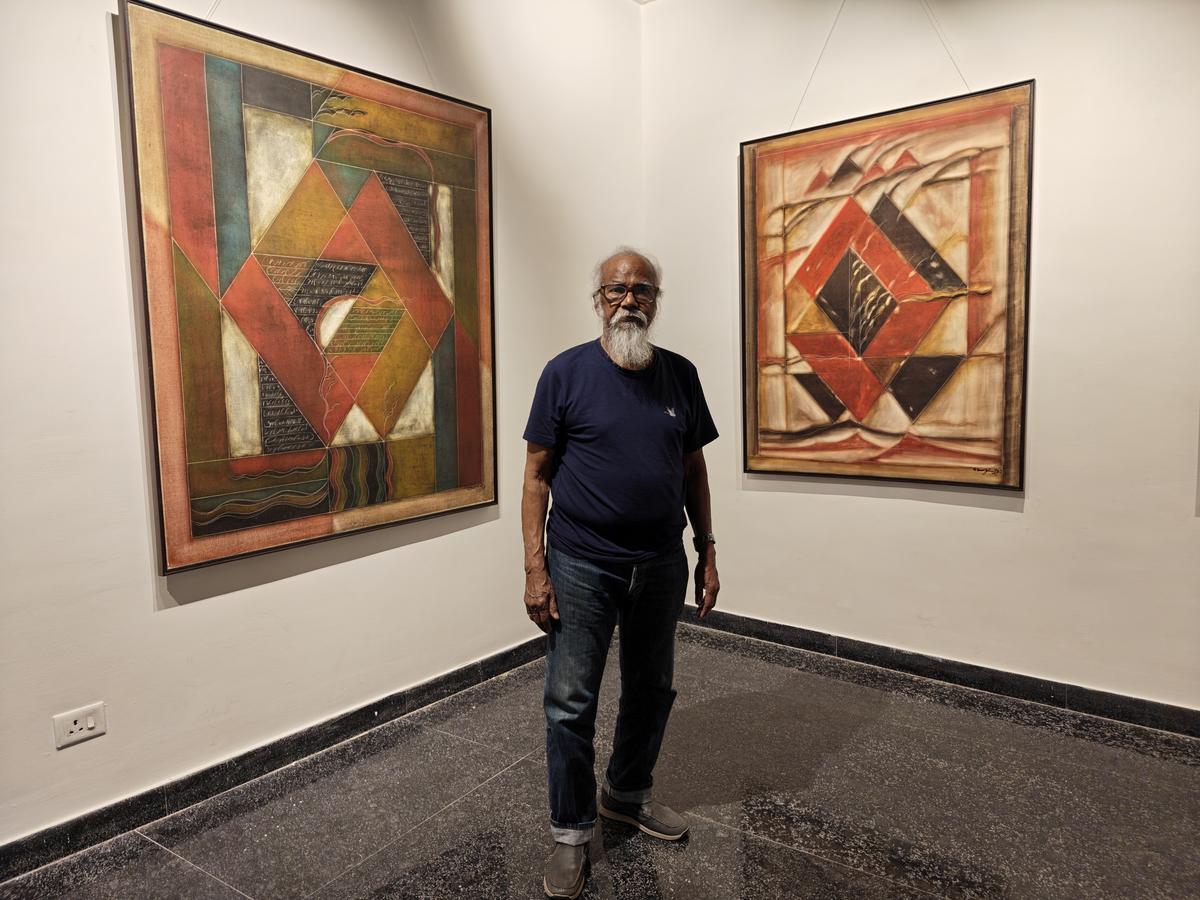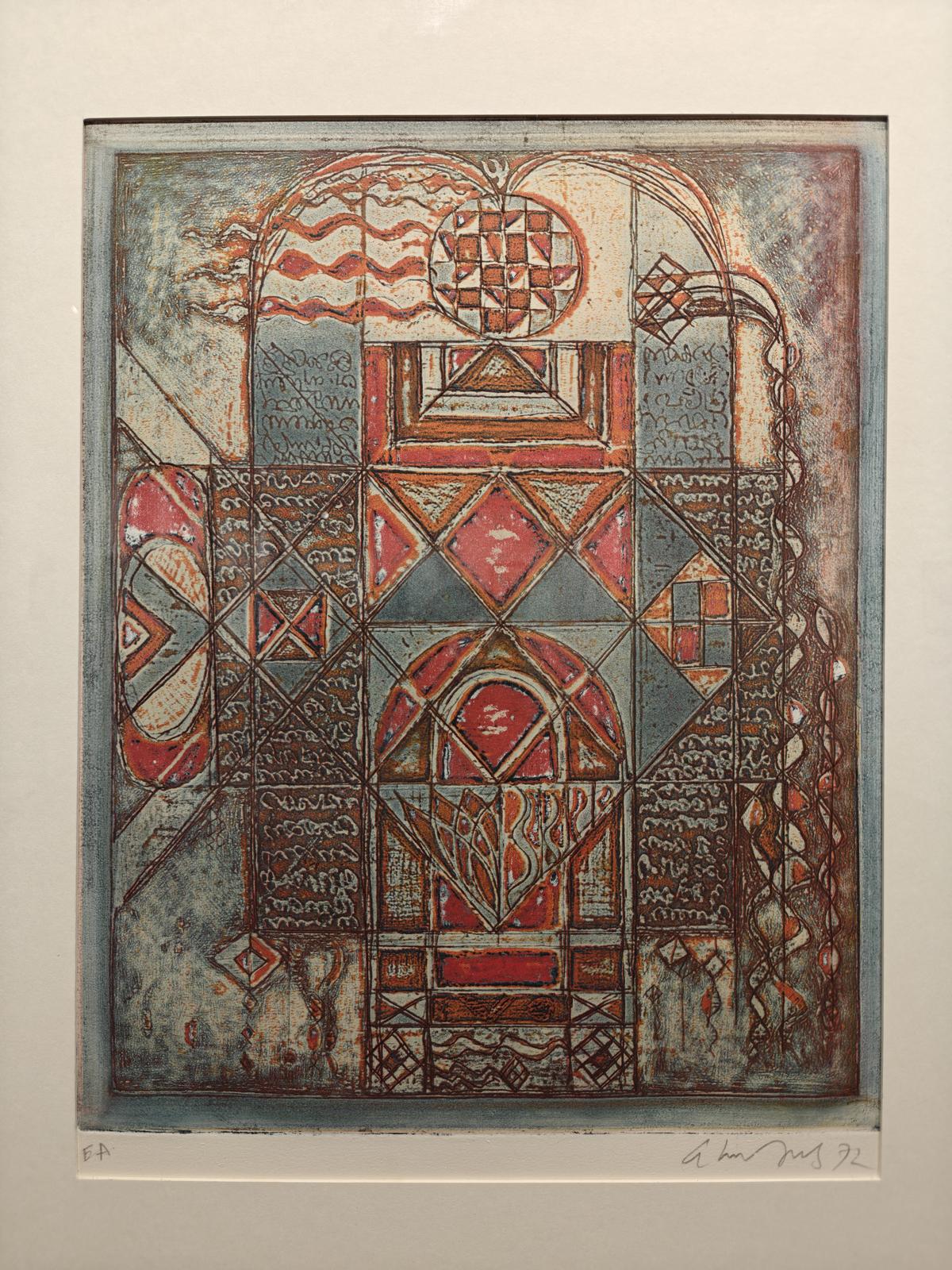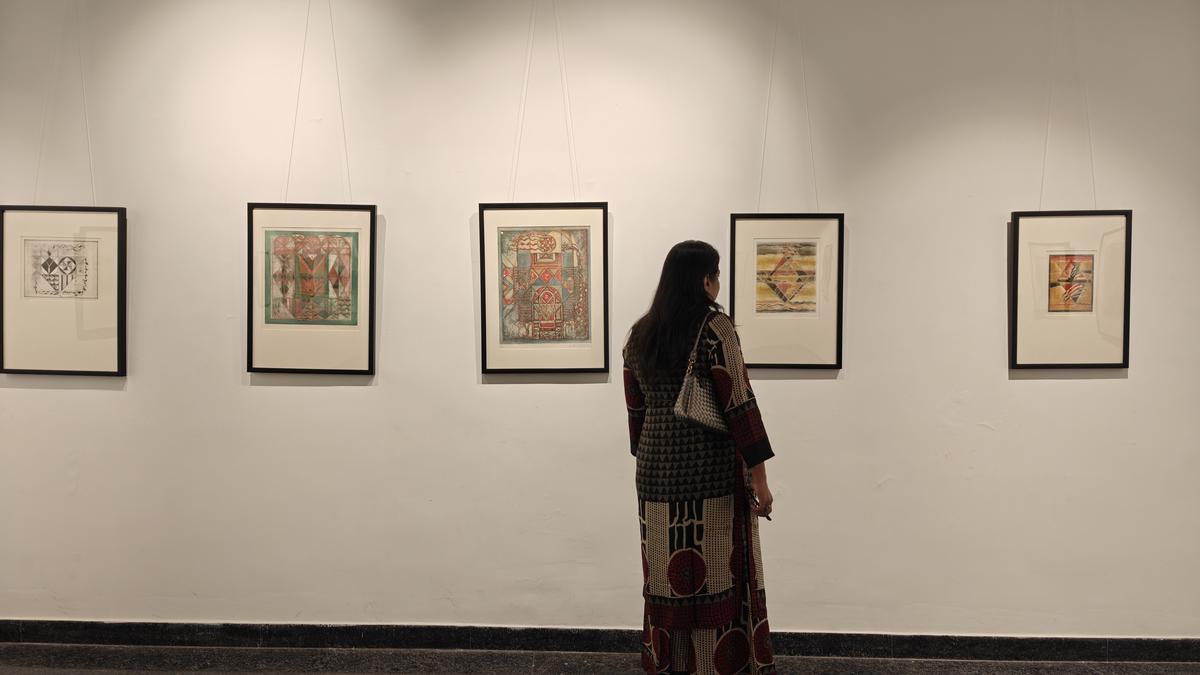Akkitham Narayanan’s work on display
| Photo Credit: Gowri S
Akkitham Narayanan strongly believes that art cannot be translated into words, and so he shoots a friendly directive at me: “Don’t exaggerate! I have nothing to say, I am here only to show”. It is almost strange that a veteran artist, one of the pioneers of the Madras Art Movement and a darling student of KCS Paniker, would throw his hands up in the air to say that there is no specific meaning to his widely appreciated, collected and studied geometric abstractions. In fact, he is not too keen on the term itself. “Any painting can be interpreted in any way. I like the forms and so I develop the forms.”
Mani Ratnam and the artist
| Photo Credit:
special arrangement
Sporting an affable smile, the 86-year-old is at Lalit Kala Akademi today, surrounded by almost 150 works of art — sourced from collectors, friends and his own collection in the city — for a partial retrospective that charts his dalliances with the form, from the 1950s to the 2020s. Large (and small) abstracts, sometimes linear and sometimes not, with a clear preoccupation for order in chaos take over the walls for his first ever solo show in Chennai. The display, sans chronology, is a window into his revered body of work spanning decades — influences from music to printmaking and tantric art are unmissable and ‘noticeably Akkitham’.

Artist Akkitham Narayanan
| Photo Credit:
Gowri S
“At the end of our studies in India, Panicker insisted that we look back into India, and our own traditions. He organised tours across the East, North and West, to make us understand a cross section of Indian art through temple and cave art,” he remembers. Out of this time came many of his figurative works — figuration, not in human form — dating back to the beginning of his practice in the 1950s. Paul Cezanne, William Kandinsky and Rembrandt, have all played their roles in Narayanan’s life through various stages of his career. He remembers pouring over these paintings in books back at the Connemara library.
Narayanan went to Paris on a Government scholarship where he studied painting under Jean Bertholle, and engraving under Lucien Couteau at the École des Beaux-Arts, from the end of 1967 to 1970. Moving to Paris, where he still lives, was a turning point in his life and artistic practice. For a young Narayanan, who until then had only a theoretical knowledge of European art, the exposure and interactions in the city helped realise how enmeshed art is to life. After a year largely carried by the dilemma of where and how to start, his practice began.

“When I went to Paris, I completely changed. I went to linear and geometric abstraction,” he recalls. It all began with two forms — the fundamental symbolic forms of the triangle and the square, which he later split from, and is to this day, experiments with.

One of the abstractions on display
| Photo Credit:
Gowri S
Panicker used to send him letters carrying curious enquiries and sometimes prescient advice. Narayanan remembers, “He would write asking, ‘What are you doing there? You are in Europe and you must be knowing what’s happening in India too. Compare these, and do something on your own!’ That inspired me to think of doing something different.” Though his canvases are reminiscent of a kind of rhythmic chanting that can be alluded to tantric art, he strips them off any religious meaning. “I think I have done everything that I could with that.”
In front of the charming miniature watercolours, it is hard not to peer into the intricacy of Narayanan’s elements. He reminds us of his realisation, “There’s nothing you can explain in words, that you can’t through images. The feeling of pleasure is hard to explain.”
A Thousand Universes is on display at Lalit Kala Akademi, Egmore until April 15 from 11am to 7pm, and at Artworld —Sarala’s Art Centre, Alwarpet, from April 16 to May 10, 10.30am to 6.30pm.
Published – April 03, 2025 12:57 pm IST

